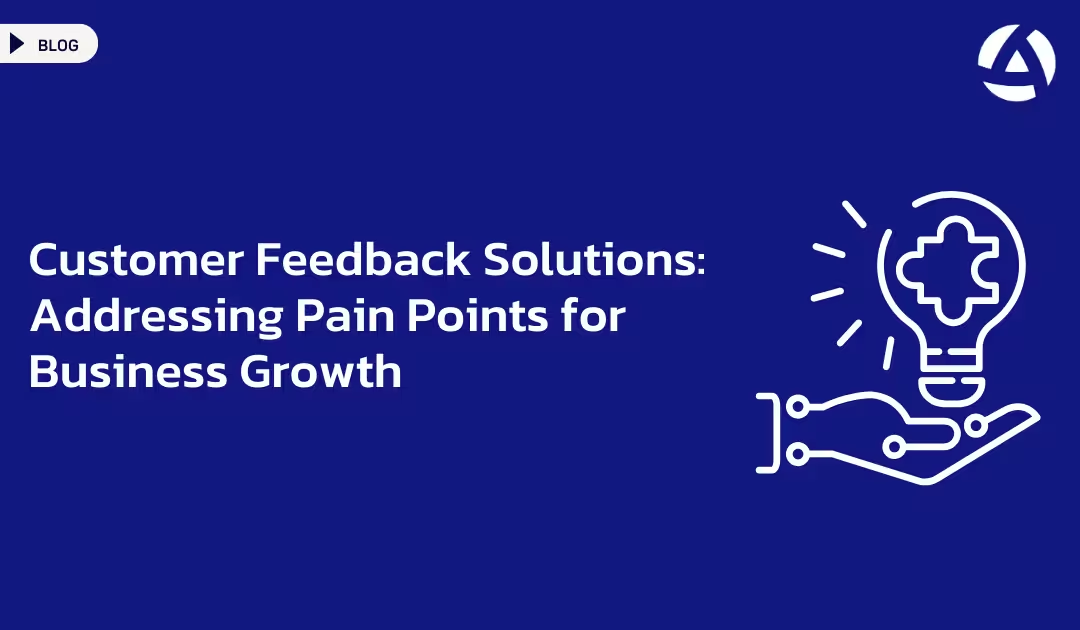Understanding customer pain points is essential for creating exceptional customer experiences and driving business growth. By addressing these pain points with the right customer feedback solutions, companies can improve customer satisfaction, increase loyalty, and identify areas for improvement. Leveraging tools and methods that allow customers to voice their frustrations helps businesses evolve and stay ahead in a competitive marketplace.
Identifying Common Customer Pain Points
Customer pain points refer to any issue or challenge a customer faces when interacting with a product or service. Some of the most common customer pain points include:
- Slow response times: Customers expect quick answers to their inquiries, whether they’re contacting support or asking about a product.
- Complicated processes: A difficult purchasing or service process can frustrate customers and lead to lost sales.
- Lack of personalization: Customers want their experiences to be tailored to their individual preferences and needs.
By identifying these pain points, businesses can prioritize the areas that need improvement.
The Role of Customer Feedback Solutions
Customer feedback solutions play a vital role in helping businesses gather and analyze feedback to pinpoint pain points. These tools help companies:
- Collect feedback through various channels: Businesses can capture feedback from surveys, social media, customer support interactions, and reviews.
- Analyze customer sentiment: Feedback solutions often include sentiment analysis tools that help businesses understand whether feedback is positive, negative, or neutral.
- Track trends over time: Monitoring feedback allows businesses to see how customer opinions evolve, highlighting persistent pain points or areas of improvement.
By utilizing these solutions, companies gain a more comprehensive view of their customers’ experiences.
Best Practices for Addressing Customer Pain Points
Once feedback is collected, addressing the pain points becomes the next step. Here are some best practices:
- Prioritize high-impact areas: Focus on solving the pain points that will make the most significant difference for your customers.
- Provide timely responses: Ensure your customer support teams are equipped to respond to feedback and issues as quickly as possible.
- Offer multiple support channels: Different customers prefer different ways to communicate. Offer phone, email, chat, and social media options for customers to reach out.
Addressing these pain points efficiently shows customers that their voices are heard and valued, which enhances loyalty.

The Impact of Customer Feedback Solutions on Business Growth
By addressing pain points through customer feedback solutions, businesses can:
- Increase customer satisfaction: When pain points are resolved, customers are more likely to remain loyal and recommend the business to others.
- Improve products and services: Listening to customer feedback allows businesses to refine and adapt their offerings based on real customer needs.
- Reduce churn rates: Pain points, if unresolved, can lead to customers leaving for competitors. Addressing issues quickly helps reduce this risk.
Using customer feedback solutions effectively not only resolves issues but creates opportunities for innovation and growth.
Customer Feedback Solutions for Better Decision-Making
In addition to addressing pain points, feedback solutions provide valuable data for making better business decisions. By leveraging customer insights:
- Product development becomes more aligned with customer needs.
- Marketing strategies can be fine-tuned to target specific pain points.
- Customer service improvements can be made based on direct customer input.
Customer feedback solutions provide the foundation for continuous improvement and development, leading to long-term business success.
Personalizing Solutions to Customer Pain Points
Addressing pain points effectively often requires personalized solutions. Customers appreciate when businesses take the time to cater responses and fixes specifically to their individual concerns. By leveraging customer feedback software, companies can segment feedback based on demographics, purchase history, and behavior, allowing for more targeted responses. This level of personalization not only resolves issues but also strengthens customer loyalty, as people feel valued and understood.
Additionally, personalization can extend beyond customer service. Feedback solutions can highlight trends and patterns that indicate customer preferences. Whether it’s refining product features, offering exclusive deals, or tailoring communication styles, personalization fosters stronger customer relationships and enhances the overall experience, driving long-term business success.
The Role of AI in Analyzing Feedback for Pain Points
Artificial intelligence (AI) plays a growing role in customer feedback solutions, offering companies a faster and more efficient way to identify pain points. AI-powered tools can analyze large volumes of feedback data in real-time, spotting recurring themes, patterns, and sentiments that human analysis might miss. This level of automation allows businesses to be more proactive, addressing potential issues before they become widespread problems.
With AI, businesses can automatically categorize feedback, detect emerging trends, and even predict future pain points. This enables a more forward-thinking approach to customer experience management. By anticipating customer frustrations, businesses can stay ahead of the curve, continually improving their offerings and delivering a more seamless experience for their customers.
Frequently Asked Questions
How can customer feedback solutions help reduce customer churn?
By identifying and addressing pain points quickly, customer feedback solutions help businesses resolve issues before they escalate. This proactive approach reduces the likelihood of customers switching to competitors, ultimately reducing churn.
What are some effective ways to collect customer feedback?
Effective methods include surveys, social media monitoring, direct customer support interactions, online reviews, and in-app feedback mechanisms. Businesses should use multiple channels to capture a broad range of customer insights.




